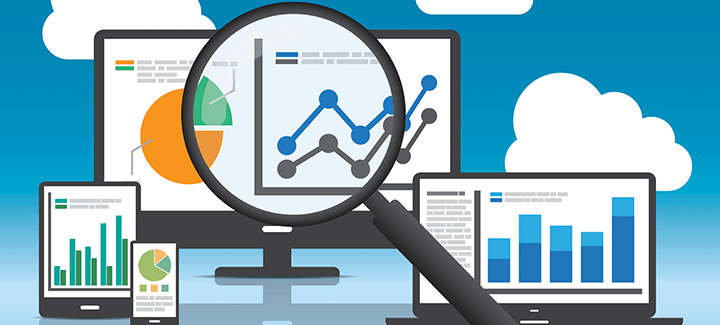Introduction
B2B market research is about more than just selling products. It’s about understanding your customers’ businesses, needs, pain points, and challenges so that you can provide them with a solution that will be valuable to them. As a B2B market researcher, you need to be able to identify your business’ target audience and what they need from your brand before you can begin developing the right marketing strategy for them.
In order to do this effectively, it’s essential that marketers conduct market research on their target consumers, whoever they may be, to learn more about their unique needs, preferences, and behaviors.
B2B market research is fundamental to a successful enterprise. Not only does it help businesses understand current market trends and consumer purchasing behaviors, but it can also be used to identify areas of opportunity, target the right consumer, and develop effective marketing strategies.
This type of research provides companies with an in-depth understanding of their customer’s needs, including their motivations for buying certain products or services. This knowledge can help shape future business decisions that affect everything from product development to sales tactics and advertising campaigns.
In this article, we’ll cover four different types of market research methods that can help guide effective B2B marketing strategies: primary market research (phone interviews), secondary market research (online surveys), working directly with an online panel provider, and administering online surveys.
- Primary Market Research: the first step in B2B market research
Primary market research is the first step in understanding your target audience. It’s the best way to get a grasp on who they are and how they behave. You can do primary market research through customer interviews, surveys, and focus groups. Once you have this information, you’ll have a better understanding of what kind of products or services would be appropriate for them.
Primary market research involves a larger sample size and usually takes longer to complete. It’s also more expensive, but it provides the most detailed information about your target audience.
This kind of market research can be done by phone, online, or in person. You can conduct primary research internally through employees or contractors who are experienced with interviewing people and asking questions. Or you can hire an external firm that specializes in B2B marketing to do all or part of this process for you.
- Online surveys: an affordable way to collect data from large groups of B2B decision-makers
Online surveys are an affordable way to collect data from large groups of B2B decision-makers with diverse demographics. Using a survey panel provider is often the best way for B2B organizations to quickly and efficiently access B2B survey respondents. When you work with an online panel provider, there are several steps you can take to ensure the quality of your survey data and protect against panel fraud.
Before you launch your survey, make sure that the respondent pool accurately represents your target market by reviewing demographic information like age, gender, location, and education level on the sample group being used as a model for your survey.
Review the qualification criteria for each potential respondent carefully as it will help determine who should be included in your sample group. This also helps ensure that only qualified respondents are completing your online surveys consistently over time so they’re not excluded later on down the line because their answers don’t meet inclusion standards set forth when they were first recruited into a panelist pool.
Questionnaires posted publicly online can be inexpensive and make your survey reach a wide audience. However, they lack the ability to collect in-depth responses or target specific demographics. There are also many free tools available that make gathering feedback through questionnaires easy and cost-effective, such as Google Forms. These surveys are easy to create, have no character restrictions, detailed analytics, and data is stored securely on Google Servers so respondents don’t need to download anything before taking a questionnaire.
- Work with a trusted panel provider: to get access to real data in real-time
Your brand reputation is on the line, so it’s important to protect against fraud. By working with a trustworthy partner, you can ensure the quality of your survey data, as well as how it is used and shared with others in your company.
In addition to protecting against panel fraud, working with a trusted provider will help ensure that your survey results are representative of the larger population because they are gathered from a diverse group of respondents who represent different demographics and geographic areas.
- Secondary market research: to get data from external sources
Secondary market research is the process of collecting information from external sources (like trade journals, reports, and other companies’ websites) to gain a better understanding of your industry. It can be conducted through publications or interviews with industry experts. Conducting secondary research allows you to get first-hand accounts and insights that are more accurate than those found in surveys or online forums. However, it’s important for you to make sure the information is still relevant before incorporating it into your own business strategy.
Here are some examples of successful secondary research:
- Surveys conducted by third-party entities like Gartner or Forrester Research can provide valuable data about how your competitors are marketing themselves online, what kinds of technologies they use for sales processes and customer service management systems (CRM), and how many employees they employ at each location throughout regions.
- Trade shows provide an opportunity for attendees such as yourself who represent small businesses looking for new products or services within their industry niche markets; these events offer an opportunity where customers can interact directly with potential vendors without having any sales pressure applied by either party involved.
Conclusion
The B2B market is highly competitive, which means that you need to stay on top of trends and developments in order to keep up with your competitors. This can be done through primary or secondary research methods. Regardless of which route you choose for gathering data, it’s important to make sure that the information you receive from respondents is accurate and reliable so that you can use it in future decision-making processes.












